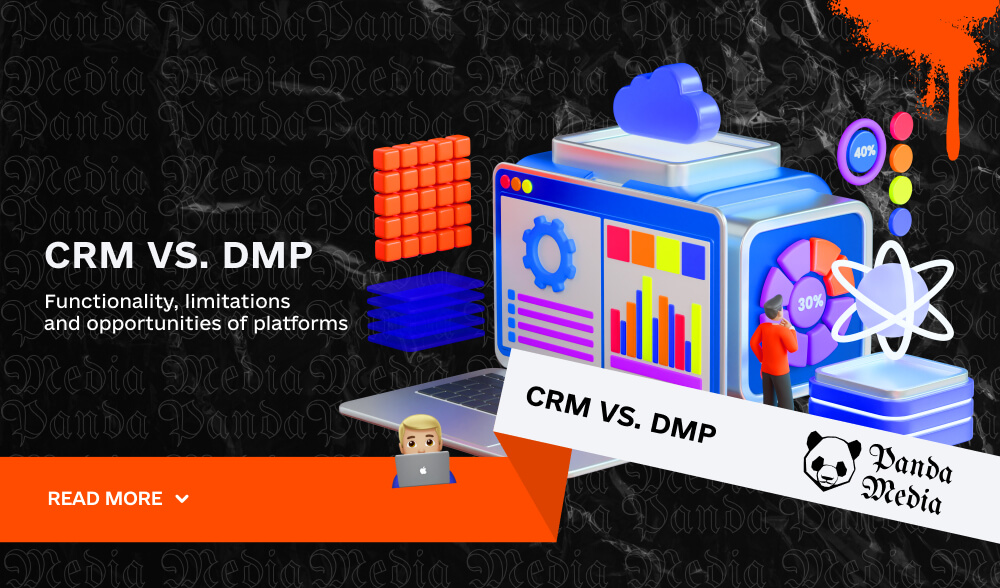
Currently, there are two complementary and simultaneously competing platforms on the market: CRM (customer relationship management) and DMP (data management platform).
Both platforms are used to target audiences in the digital sphere. However, the main differences between them are as follows:
Both targeting technologies are used by data-driven agencies and offer brands to create a unique user experience, in other words, personalized advertising.

CRM can export the collected data to other databases in the form of lists of users who meet the specified characteristics.
The DMP platform allows you to create user segments by grouping them by similar characteristics or interests. Other platforms can then use these groups for other purposes, such as buying display ads for this audience or communicating with them.
The data that buyers or sellers of a product enter or upload goes directly into the platform’s database. The CRM stores and categorizes information about the consumer, ranging from personal data (name, address, contact information, etc.) to consumer preferences (what they bought, what they reviewed, etc.).
DMP uses tags to mark website pages. They help to track the user’s movement around the site. DMP also collects information from other resources.
A CRM platform of a bank, for example, can help track users who have started using a credit card and have not disabled the function of additional credit funds. For a future marketing campaign, such a targeted audience can be offered a bonus credit limit extension.
With the help of a DMP platform, the same bank can track users who are considering opening a loan in another bank and those who are already customers of their bank. If there is a match between these two audiences, the bank can target them by offering the privileges of its lending programs.

The Achilles’ heel of both CRM and DMP is the degree of targeting accuracy. Both platforms strive to expand the boundaries of access to new audiences. However, each has its limitations. CRM itself is not able to find audience profiles online, and DMPs are not able to segment the thicket of data on Facebook or Instagram. The fact is that both Facebook and Instagram are not very happy to let outside data into their spaces. Therefore, working with them, CRM allows you to target existing customers by comparing known information with social media data.
Despite certain competitive opportunities, CRM and DMP platforms complement each other for full coverage. CRM is ideal for audience segmentation, and a well-segmented audience can become a source of data for a DMP platform.
The interaction of the two platforms creates a true cross-channel experience for the consumer. Some DMP platforms allow you to identify users among different lists and audiences. By comparing CRM user lists and user IDs from other sources (cookies), DMP makes it possible to fully track user behavior across different sites and platforms. In addition, a DMP can help create user segments with similar characteristics to existing customers and help identify potential customers based on the characteristics stored in CRM databases. This opens up a whole variety of new audiences previously unknown to the brand.
For media targeting, audiences from the DMP are loaded into the DSP. Also, DMP data can be used in the DCO (Dynamic Creative Optimization) program to create a brand decision tree in communicating with the audience.
CRM targeting technology is used for social media. Thanks to the data collected by CRM and available from the pages and interactions of the users themselves, the strategy of creative communication with the brand is personalized for each social media user. Currently, social networks do not allow the use of decision trees created outside of the networks themselves. However, there is an opportunity to build personalized communication with consumers within the parameters of advertising campaigns on social networks.
Ultimately, both platforms are useful for creating a high-quality dialog with consumers in a multichannel environment.
Subscribe and get the latest news, material announcements, and unique offers first.